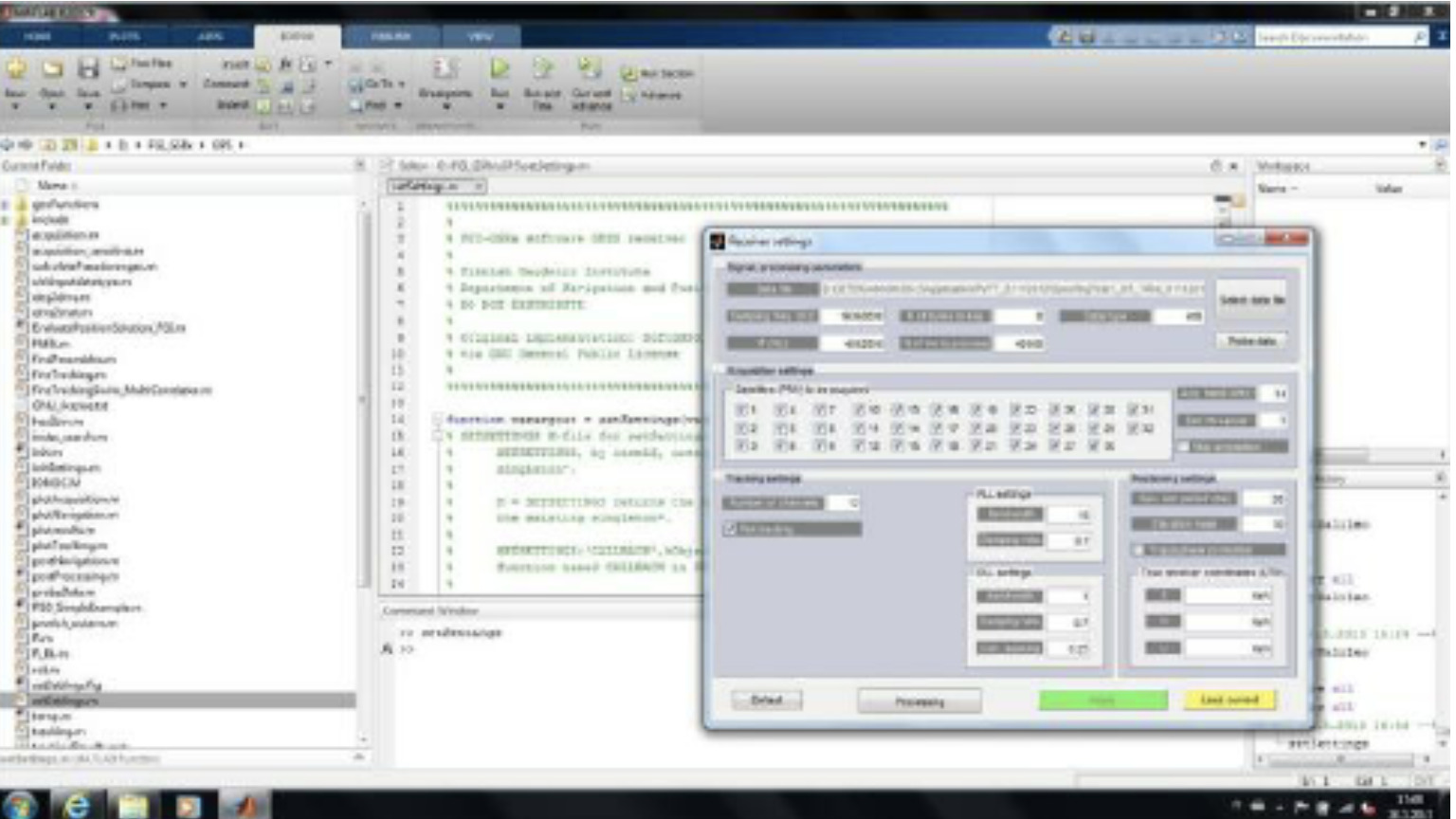The Finnish Geodetic Institute (FGI) of the National Land Survey of Finland announced the release of its software-defined receiver as open source for the international GNSS community. The GSRx software receiver has been extensively used as a research platform for the last decade in different national and international R&D projects to develop, test and validate novel receiver processing algorithms for robust, resilient and precise position, navigation and timing (PNT).
The open-source release of FGI-GSRx will enable any third-party developer, researcher and student to utilize the platform to develop, test and validate their own innovative algorithms without requiring to actually develop the core functionalities of an inherent GNSS receiver. The FGI-GSRx offers flexible interface and configuration files, where any researcher with basic understanding on the GNSS receiver can further implement their own codes or algorithms at different receiver processing stages. This allows the user to go much deeper on the code without thinking greater detail of the actual implementation.
[Image courtesy Heidi Kuusniemi]
FGI-GSRx has been used, for example, to develop algorithms for detecting GNSS jamming and spoofing events in several past R&D projects. It is also used to develop mitigation algorithms to offer a resilient PNT solution to the user.
The software receiver can be utilized in universities and other research institutes as a tool for training graduate level students and early-stage researchers for getting hands on experience on GNSS receiver development. It can also be utilized across the GNSS industry as a benchmark software-defined receiver implementation.
More Information
The open-source FGI-GSRx is available here.
A software defined receiver enables algorithm optimization and testing uniquely in the rapidly changing industry. Hence multi-constellation FGI-GSRx receiver offers diversity and improved accuracy.
When the FGI-GSRx was first developed, it was able to track two IOV (In-Orbit Validation) satellites called GIOVE A and GIOVE B from the European GNSS system Galileo. Since then, the researchers at FGI have been continuously developing new capabilities to the software receiver with the inclusion of Galileo in 2013, the Chinese satellite navigation system BeiDou in early 2014, the Indian regional satellite navigation System NavIC in late 2014, and the Russian satellite navigation system GLONASS in 2015.
The FGI-GSRx software receiver will also be tied with the book ‘GNSS Software Receivers’ by Cambridge University Press, a next edition of one of the fundamental GNSS textbooks, which is now in press to be published in summer of 20




